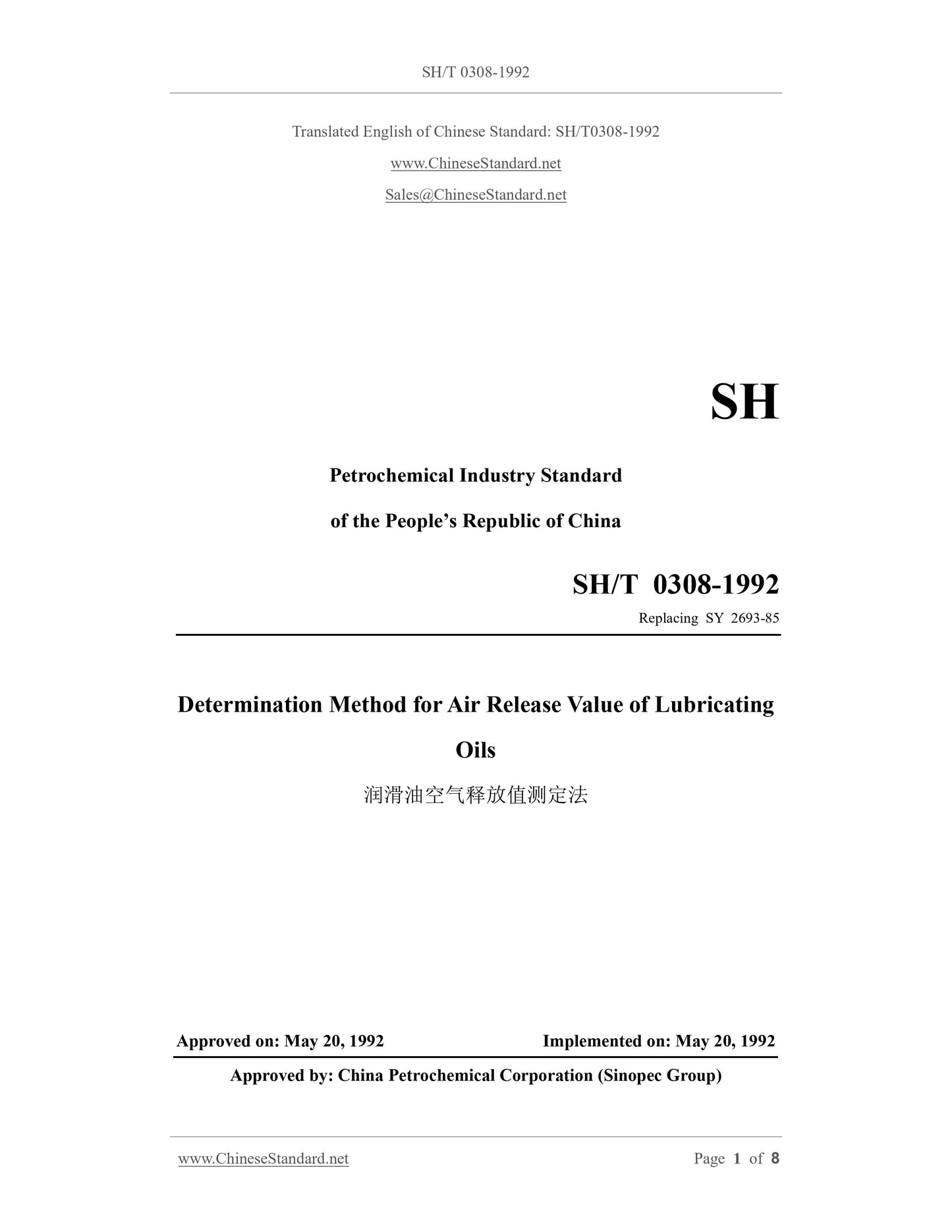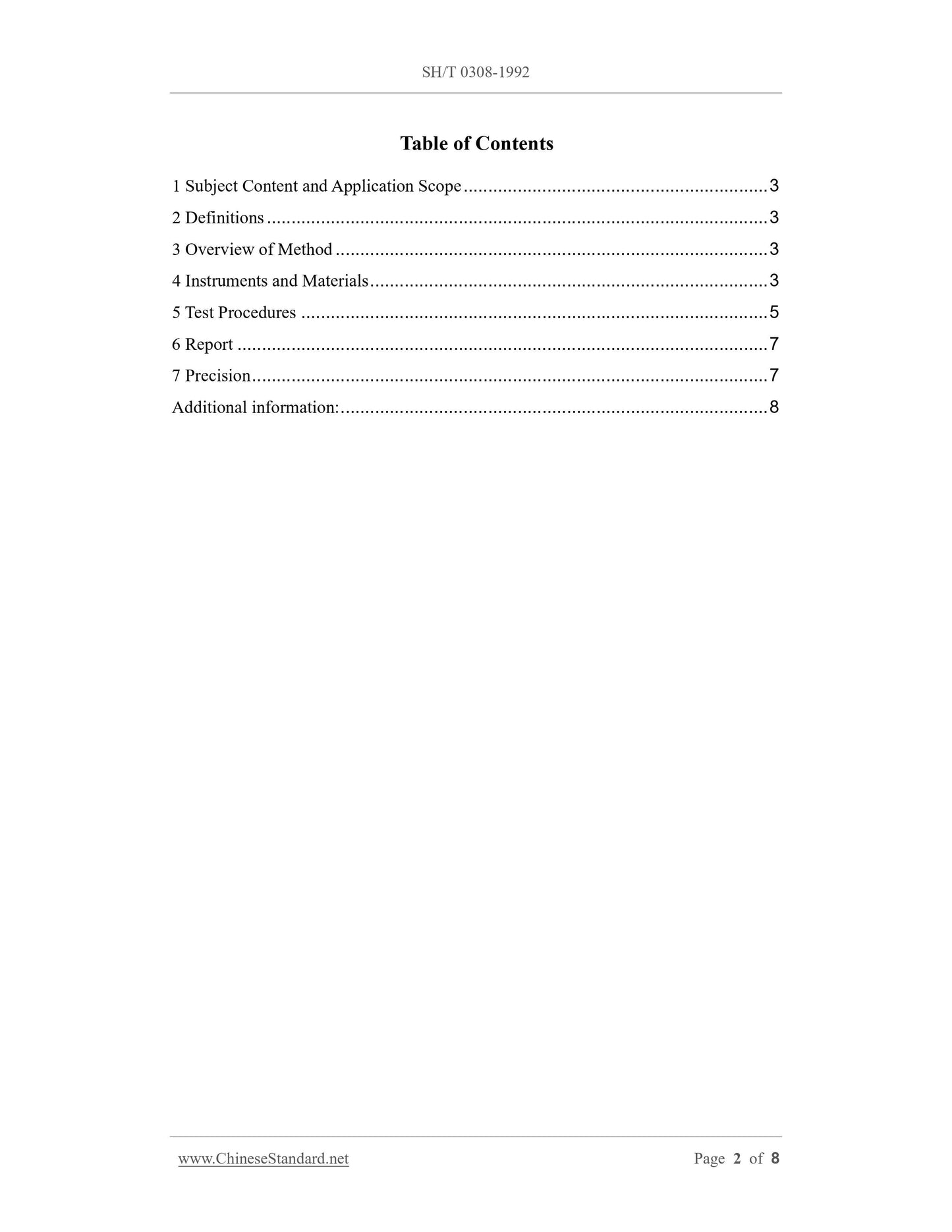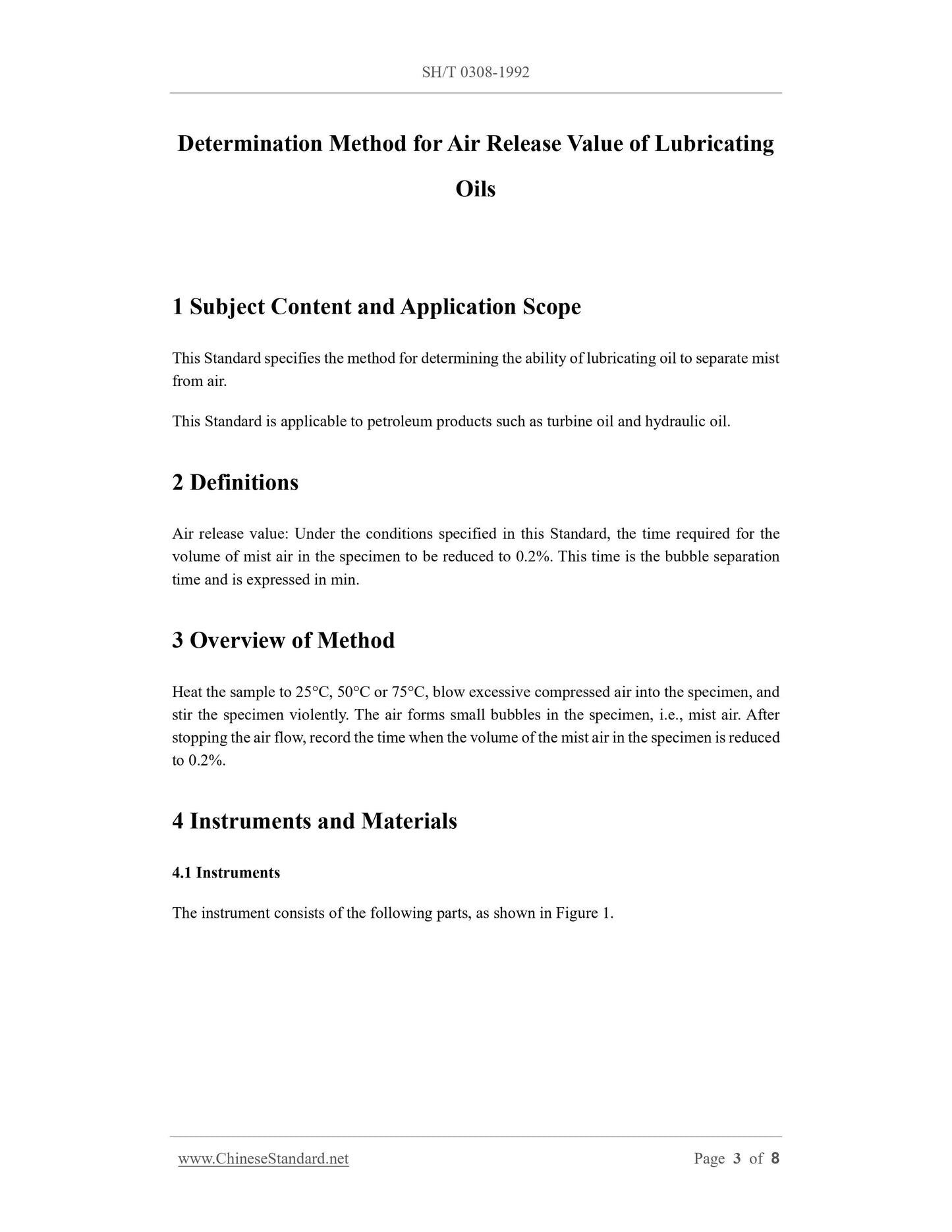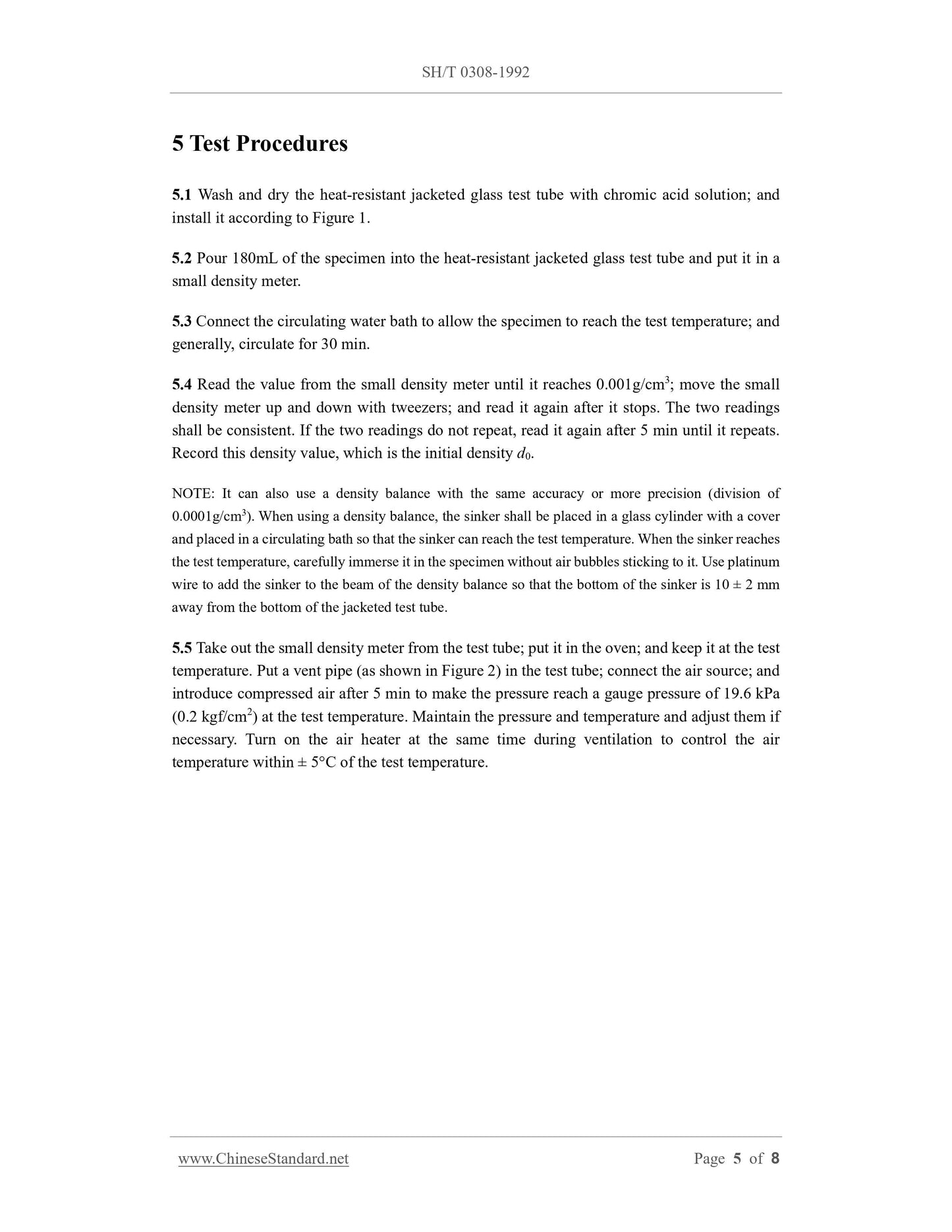1
/
of
4
www.ChineseStandard.us -- Field Test Asia Pte. Ltd.
SH/T 0308-1992 English PDF (SH/T0308-1992)
SH/T 0308-1992 English PDF (SH/T0308-1992)
Regular price
$350.00
Regular price
Sale price
$350.00
Unit price
/
per
Shipping calculated at checkout.
Couldn't load pickup availability
SH/T 0308-1992: Determination Method for Air Release Value of Lubricating oils
Delivery: 9 seconds. Download (and Email) true-PDF + Invoice.Get Quotation: Click SH/T 0308-1992 (Self-service in 1-minute)
Newer / historical versions: SH/T 0308-1992
Preview True-PDF
Scope
This Standard specifies the method for determining the ability of lubricating oil to separate mistfrom air.
This Standard is applicable to petroleum products such as turbine oil and hydraulic oil.
Basic Data
| Standard ID | SH/T 0308-1992 (SH/T0308-1992) |
| Description (Translated English) | Determination Method for Air Release Value of Lubricating oils |
| Sector / Industry | Petrochemical Industry Standard (Recommended) |
| Classification of Chinese Standard | E34 |
| Classification of International Standard | 75.080 |
| Word Count Estimation | 13,194 |
| Date of Issue | 6/14/1992 |
| Date of Implementation | 5/20/1992 |
| Older Standard (superseded by this standard) | SY 2693-1985 |
| Adopted Standard | ASTM D3427-1975, NEQ |
| Summary | This standard specifies the method for determining the lubricating oil mist separator air capabilities. This standard applies to turbine oil, hydraulic oil, petroleum products. |
Share







